CAST to Release Comprehensive Paper on FIFRA and ESA at the CropLife & RISE Regulatory Conference
This was written by Dr. Jayson Lusk (2017 BCCA recipient) and has been reprinted with permission. Be sure to check out his other blogs on his website.
I was on NBC Nightly News last night talking about rising retail food prices (the whole episode is here, my very short clip starts around the 17:50 mark). I’d previously talked to the Today Show on the same subject and fielded several other media questions in recent days about whether we have a chicken shortage.
All the recent attention on food price inflation is a bit perplexing. The rate of food price increases over the past year is definitely above what we have come to expect in recent years, but we aren’t seeing spikes right now like we witnessed during the initial COVID shutdowns in March 2020 or the beef and pork packing plant shutdowns later in April and May of last year. By “spike” I mean the month-to-month increase. But, we have seen continually increasing prices over the past year for many foods. Perhaps it is the cumulative effect of higher than average monthly increases that is starting to get people noticing. Moreover, there are some wholesale meat prices, like those for chicken breast, chicken wings, pork belly, pork ribs, and beef loins that are running far above average, which is attracting attention as we head into grilling season.
Before showing some data on retail food prices, a few comments about some factors pushing prices higher:
So, what is happening to retail food prices? Here are some figures I created using data from the Bureau of Labor Statistics (as of March 2021, the last date they’re currently reporting). Below are year-over-year changes in prices of food at home (i.e., though supermarkets and grocery) and away from home (i.e., through restaurants) through March 2021.
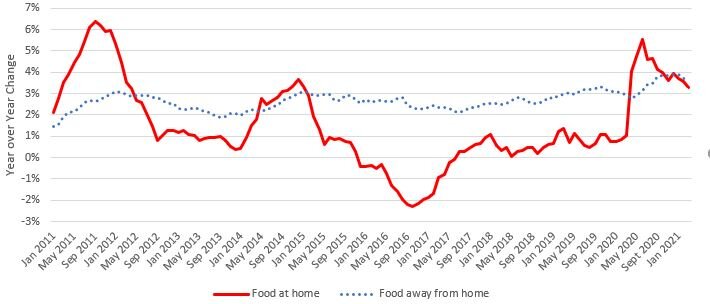
The figure above looks as if prices of food at home have been falling since March of 2020; however, note that the figure reports the implied annual rate of increase. Thus, the figure is showing that the rate of increase has fallen a bit, NOT that food prices are falling. If, instead, we look at the change in prices from a fixed point in the past (say, January 2011), a different picture emerges.
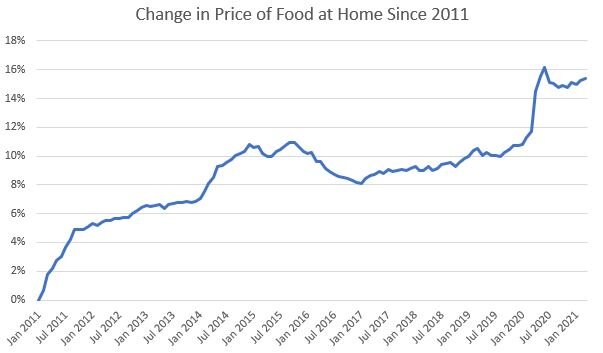
As the figure shows, food prices through grocery are today about 15-16% higher than they were in January 2011. Moreover, there was a big spike in March 2020, and while there was a temporary reprieve, prices in recent months have trended back upward.
If you’re curious about the individual food products driving the increase in food prices, below are the year-over-year changes for four broad categories. As the figure shows, meat, poultry, fish, and eggs are a big driver of the overall increase in price of food at home.
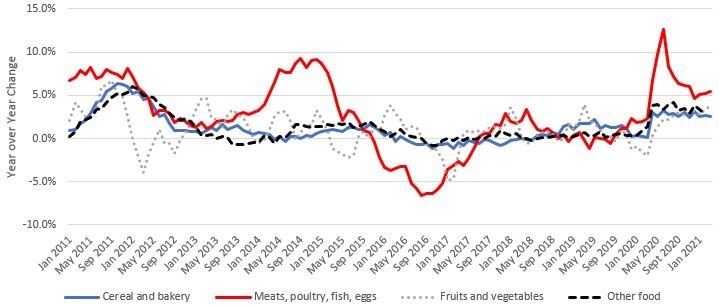
Honing in a little further, below are the year-over-year changes in beef, pork, and chicken prices bought through grocery.
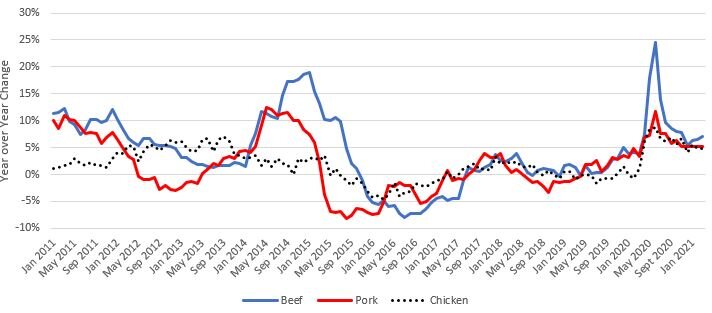
Again, it might be useful to look not at year over year changes (i.e., the rate of inflation), but instead look at the change in prices from a fixed point in the past (January 2011). As of March 2021, retail beef, pork, and chicken prices are about 45% , 17%, and 20% higher than in January 2011, respectively.
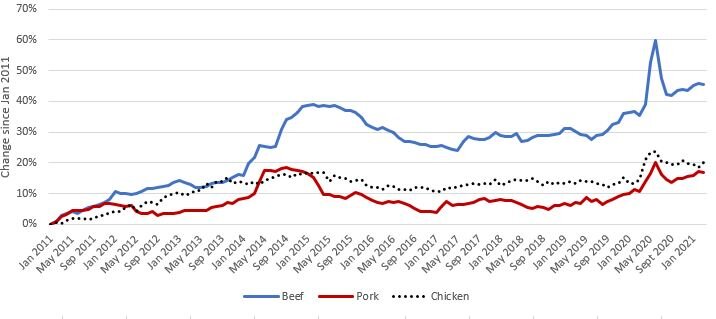
Your donation to CAST helps support the CAST mission of communicating science to meet the challenge of producing enough food, fiber and fuel for a growing population. Every gift, no matter the size, is appreciated.